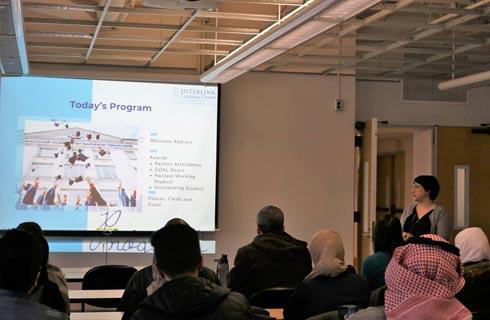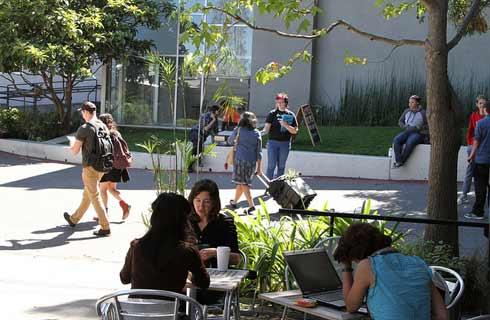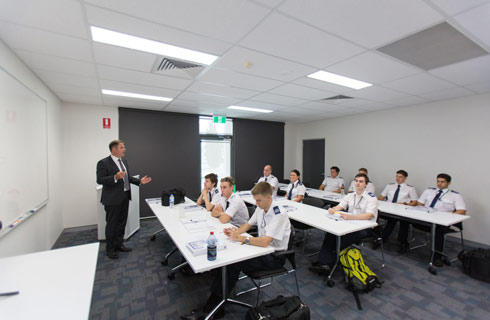Doctor of Philosophy in Computer Science - Computational Ecology

学历文凭
Ph.D.

专业院系
生态,进化及相关科学

开学时间

课程时长

课程学费

国际学生入学条件
The candidate will have completed a bachelor’s degree at a regionally-accredited university or four-year college.
Official transcript of all previous college or university work
Successful applicants will usually have a grade point average (GPA) of at least 3.5 (on a 4.0 scale). Normally, no applicant will be considered who has less than a 3.0 or less than a B average in undergraduate computer science courses.
All GRE general scores are required by the School of Computing and Information Science. We do not require the subject test in computer science, although it may be submitted if desired.
International students will need to submit TOEFL (minimum 80), or Academic IELTS scores (with no score lower than 6.5 and a minimum average of 7.0).
IDP—雅思考试联合主办方

雅思考试总分
7.0
了解更多
- 雅思总分:7
- 托福网考总分:80
- 托福笔试总分:160
- 其他语言考试:Duolingo English Test - 105
CRICOS代码:
申请截止日期:请 与IDP联系 以获取详细信息。
课程简介
Modeling ecosystems Ecosystems are extraordinarily complex assemblages of plants and animals interacting with each other, with the physical environment, and, increasingly, with humans. Ecology is the scientific field that seeks to understand ecosystems. Ecologists are turning to computer models to help them make their models of ecosystem processes concrete and to provide predictions about the future of the ecosystem. Computer models allow rapid testing of ecology ideas by simulation and provide the means to run what-if scenarios that would be difficult or impossible otherwise.<br>The School's AI Laboratory, MaineSAIL, has ongoing computational ecology research at both the small scale (predator-prey interactions) as well as larger, ecosystem-wide simulation.<br><br>Predator-prey interactions<br>In marine ecosystems, surfaces that become cleared, for example by wave action or physical scraping, are colonized by organisms that interact and develop over time into so-called fouling communities. Predicting where the succession of species will lead the community (e.g., mussel-dominated, barnacle-dominated, etc.) is difficult, as there are many factors affecting succession. Since ships hulls, as well as new pilings and other underwater structures, fall into the category of cleared surfaces, studying these ecological systems is of more than academic interest.<br><br>Cordylophora lacustris, a hydroid<br>Photo courtesy David Belzard, UNH<br>One potential determinant of the climax fouling community is predation of some early settlers on others. In some estuarine communities, for example in New England, hydroids (colonial cnidarians similar to freshwater hydra) are early settlers. They are preyed upon by nudibranchs (sea slugs). Hydroids, in turn, prey on other larvae settling on the substrate, but they prey on different kinds of larvae preferentially. Thus the degree of predation by nudibranchs on hydroids will likely affect the succession in the system.<br><br>We have developed a predator-prey model for the nudibranch-hydroid system. By running simulations of the model under various conditions of assumed growth, etc., of the species, biologists can make predictions about the likely outcome of the predation events as well as the resulting impact on community succession.<br><br>Ecosystem-scale models<br>Work is currently ongoing to extend our computational ecology work to the level of an entire ecosystem. The goal of the MEME (Maine Ecosystem Model of Estuaries) project is to create a simplified model of community succession in an estuary by instantiating multiple small-scale ecological models (e.g., predator-prey model) and interpolating the results across the estuary.<br><br>Another, multi-disciplinary project for ecosystem modeling is being conducted in conjunction with researchers in UMaine's School of Marine Science. Tools from computer simulation and modeling (e.g., agent-based simulation) as well as machine learning (e.g., learning classifier systems) are used to help biologists and others model the ecology of the Gulf of Maine, in particular with respect to lobsters, sea urchins, and groundfish. In addition to furthering the understanding of the Gulf, an ultimate goal is to develop complex adaptive system models that can be used by regulators to create more appropriate fisheries management regulations than is currently possible. The project includes computer scientists from MaineSAIL and UMA, .biologists, physical oceanographers, economists, and ecologists from SMS, and a MacArthur Fellow from Colby.
相关申请

预科

奖学金

实习机会

在校学习

跨境学习

校园授课-线上开始

在线/远程学习
本校相关课程
动物学理学硕士

学历文凭
Masters Degree
下一个开始日期
课程费用总额
野生动物生态学哲学博士

学历文凭
Ph.D.
下一个开始日期
课程费用总额
野生动物保护硕士

学历文凭
Masters Degree
下一个开始日期
课程费用总额
野生动物生态学理学硕士

学历文凭
Masters Degree
下一个开始日期
课程费用总额
西班牙语教学文学硕士

学历文凭
Masters Degree
下一个开始日期
课程费用总额
Master of Social Work

学历文凭
Masters Degree
下一个开始日期
课程费用总额
其他相关课程
北方生态学哲学博士

劳伦森大学
泰晤士高等教育世界大学排名:

学历文凭
Ph.D.
下一个开始日期
课程费用总额
生态修复理学士(荣誉学位)

特伦特大学
泰晤士高等教育世界大学排名:

学历文凭
Bachelor Degree with Honours
下一个开始日期
课程费用总额
农业生态学学士

曼尼托巴大学
泰晤士高等教育世界大学排名:

学历文凭
Bachelor Degree
下一个开始日期
课程费用总额
可再生资源哲学博士

麦吉尔大学继续教育学院
泰晤士高等教育世界大学排名:

学历文凭
Ph.D.
下一个开始日期
课程费用总额
生态学学士

卡尔加里大学
泰晤士高等教育世界大学排名:

学历文凭
Bachelor Degree
下一个开始日期
课程费用总额
家庭生态与实践理学硕士(基于论文)

阿尔伯塔大学
泰晤士高等教育世界大学排名:119

学历文凭
Masters Degree
下一个开始日期
课程费用总额





